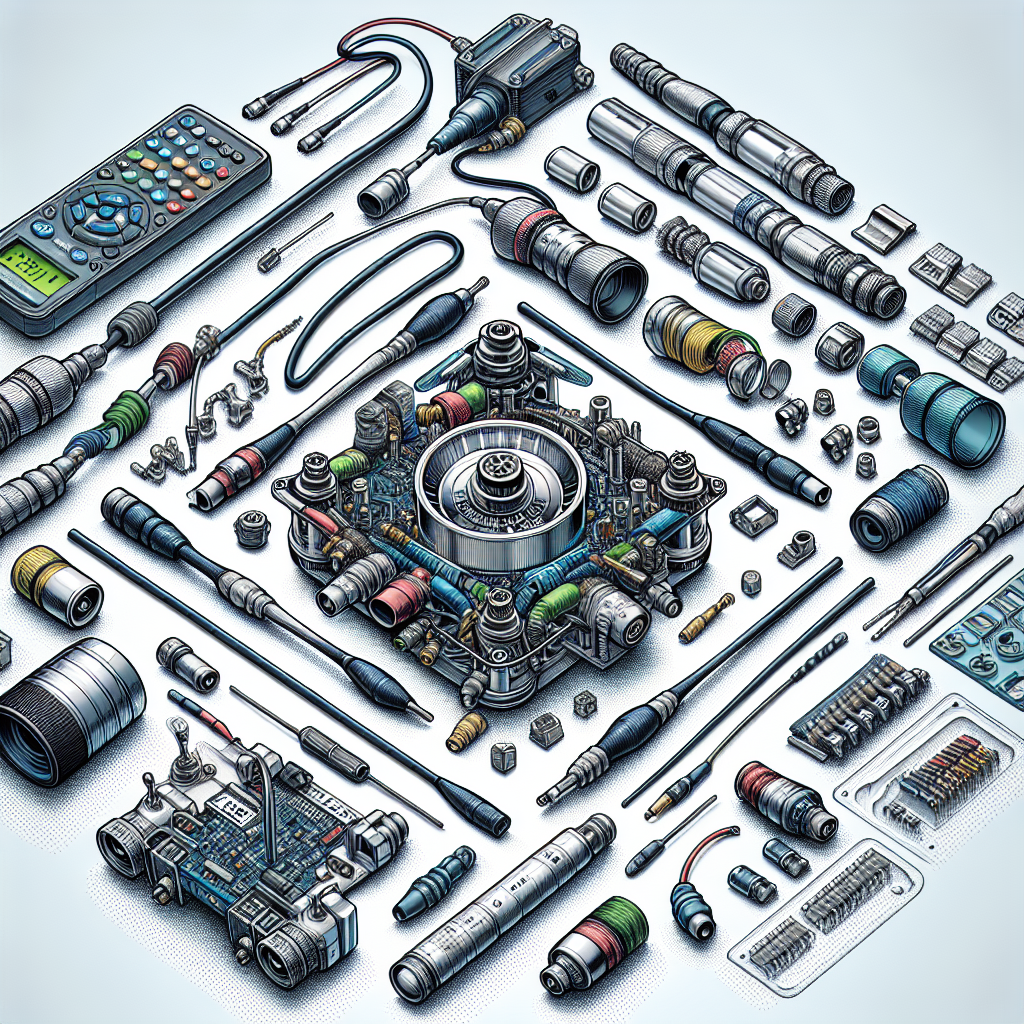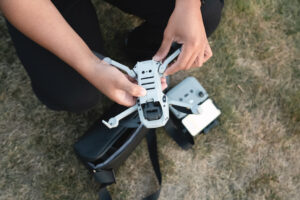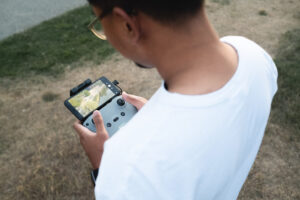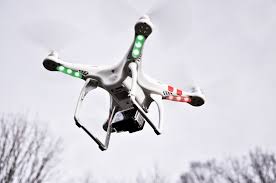
Key Takeaways:
- Understanding the impact of antenna choice on FPV drone racing performance.
- What to expect when unboxing the iFlight Crystal HD Patch Antenna.
- Guidance on installing the iFlight Crystal HD Patch Antenna for optimal results.
- Insights into the benefits of top vs. bottom mounting.
- Tips on antenna placement to maximize your FPV racing drone’s capabilities.
Ace Your FPV Racing: Gear Up with the iFlight Crystal HD Patch Antenna
When it comes to FPV racing, every detail counts, and the right gear can make all the difference. That’s why I’m excited to talk about the iFlight Crystal HD Patch Antenna. This piece of equipment is a game-changer, offering clarity and range that can give you the edge you need on race day.
Why Your Choice of Antenna Matters on Race Day
Your antenna is the eye of your drone, providing the video feed that is your only visual connection to your high-speed flyer. A high-quality antenna like the iFlight Crystal HD can mean the difference between a choppy, unreliable view and crystal-clear vision. It’s not just about seeing the course; it’s about feeling confident in your control, making split-second decisions, and pushing your drone to its limits.

Unboxing the iFlight Crystal HD Patch Antenna Kit
Opening the iFlight Crystal HD Patch Antenna Kit is like unwrapping a piece of the future. Inside, you’ll find the sleek, carbon-black antenna array, ready to replace your stock FPV goggles’ front plate. The kit also includes a high-quality RG178 cable and RP-SMA connector, ensuring a secure and efficient link to your drone’s video system.
Setting Up for Success: Installing the iFlight Crystal HD
Proper installation is critical to getting the most out of your iFlight Crystal HD. The process is straightforward, but attention to detail is key. You’ll be replacing your goggles’ front plate, so make sure you have a clean workspace and the right tools on hand.
Step-by-Step Installation Guide
First, carefully remove your goggles’ original front plate. Next, align the iFlight Crystal HD Patch Antenna with the front of your goggles. Using the provided screws, secure the antenna in place. Finally, connect the RG178 cable to your goggles’ video transmitter. Make sure all connections are snug and secure, and you’re ready to go!
Top vs. Bottom Mounting: Making the Right Choice
Mounting your antenna can be a personal preference, but there are practical considerations. Top mounting can provide a clearer line of sight to your drone, especially in crowded race environments. Bottom mounting might be better suited for casual flying or if you’re concerned about the antenna getting in the way during aggressive maneuvers.
Optimizing Antenna Placement for Maximum Performance
Even the best antenna can’t help you if it’s not properly positioned. The iFlight Crystal HD should be mounted with the patches facing the direction you’ll be flying most often. Avoid obstructions and keep in mind that the higher you can place your antenna, the better your reception will be, especially in hilly or obstacle-rich environments.
Understanding the Specs: What Makes the iFlight Crystal HD Stand Out
The iFlight Crystal HD isn’t just another patch antenna. It’s a meticulously designed array that stands out in the FPV racing scene. With its low profile, high gain, and directional capabilities, it’s engineered to elevate your racing experience by providing exceptional video clarity and range.
Analyzing the 9dBi Gain for Enhanced Range
Gain is a measure of an antenna’s ability to direct or focus radio energy over a region of space. The iFlight Crystal HD boasts a 9dBi gain, which means it can significantly enhance the range and signal strength of your FPV feed. This higher gain translates to improved video quality over longer distances, giving you the confidence to fly farther without losing sight of your racing drone.
Exploring the Impedance and Radiation Efficiency
Impedance matching is crucial for the transfer of power between your goggles and antenna. The iFlight Crystal HD is designed with an impedance of 50 ohms, the standard for FPV systems, ensuring maximum power transfer. Additionally, its radiation efficiency is optimized to reduce the amount of power absorbed by the antenna itself, meaning more power is effectively radiated out, giving you a stronger signal.
Comparing LHCP and RHCP: Which Is Right for You?
FPV antennas come in two circular polarization types: Left-Hand Circular Polarization (LHCP) and Right-Hand Circular Polarization (RHCP). The iFlight Crystal HD uses LHCP, which is less common than RHCP and can sometimes result in less interference in races where other pilots are using RHCP. Choosing between LHCP and RHCP depends on your local flying environment and the gear used by your fellow pilots.
Tuning In: Calibration and Channel Selection
Getting the best performance from your iFlight Crystal HD involves more than just installation. Calibration and channel selection are vital to ensure you’re getting the clearest video feed without interference from other pilots or signals.
Ensuring Clear Transmission with Optimal Channel Settings
Before you take off, scan the environment for the cleanest channel. Use your goggles’ built-in scanning function to find a channel with the least noise. Remember, the cleanest channel at the start of the day might not stay that way, so it’s wise to re-scan periodically, especially at events with multiple pilots.
Advanced Calibration Techniques for the iFlight Crystal HD
For those looking to fine-tune their setup, advanced calibration can make a noticeable difference. This involves adjusting the antenna’s position and angle in relation to your drone’s flight path. Experiment with small adjustments and test flights to find the sweet spot where your video feed is at its best. Keep a log of these settings for different locations to save time on future race days.
Flight Test: Putting the iFlight Crystal HD to the Real-World Test
Once your iFlight Crystal HD is mounted and tuned, it’s time to take it to the skies. Real-world testing is crucial; it’s where theory meets practice. I recommend starting with a familiar course to get a baseline feel for the performance. From there, push the boundaries by flying in different environments—dense forests, urban landscapes, and open fields—all present unique challenges for signal strength and quality.
Measuring Performance in Diverse Flying Conditions
Different flying conditions can greatly affect your FPV feed. When testing the iFlight Crystal HD, pay attention to how the antenna handles multipathing, where signals bounce off surfaces, causing interference. You’ll also want to note any signal drop-offs or dead zones. Keep a flight log to record performance in various environments; this data is invaluable for understanding your antenna’s capabilities and limitations.
Reading Signal Strength and Quality Indicators
Signal strength and quality are more than just numbers; they’re your eyes in the sky. Most FPV goggles provide real-time RSSI (Received Signal Strength Indicator) readings. A strong RSSI means a clear video feed, but don’t ignore the quality. Look for consistent, high-quality reception rather than just the highest strength. Fluctuations can be a sign of potential issues with your setup or the environment.

Adjustments Post-Flight Testing: Fine-Tuning for the Next Race
After each test flight, review your logs and make adjustments. Maybe the antenna angle needs tweaking, or perhaps you’ve discovered that certain environments require specific channel settings. Use this insight to fine-tune your setup for the next race. Remember, the goal is not just to improve but to maintain peak performance consistently.
Complementary Components: Enhancing Your Antenna with Additional Accessories
Your iFlight Crystal HD Patch Antenna is a powerful tool, but it’s part of a larger ecosystem. To truly maximize its potential, consider pairing it with complementary components. These accessories can enhance your flying experience, offering better control, more information, and ultimately, a more enjoyable race day.
Must-Have Accessories for the iFlight Crystal HD Patch Antenna
- A durable antenna case to protect your investment during transport.
- An RF power meter to monitor your drone’s transmission power.
- Additional RP-SMA connectors for quick repairs or replacements.
- A high-quality battery for your FPV goggles to ensure they last through long race days.
- Antenna extension cables for more flexible mounting options.
- A signal booster to amplify your video feed in challenging environments.
- Lightweight, high-strength mounting brackets for secure attachment.
Pairing with Omni Antennas for a Complete FPV Experience
While the iFlight Crystal HD excels in directional reception, pairing it with omni-directional antennas can fill in the coverage gaps. Omni antennas provide a 360-degree reception pattern, which can be beneficial for close-range maneuvering and indoor racing. When combined, you get the best of both worlds—long-range clarity and short-range coverage, ensuring you’re prepared for any racing scenario.
Protecting Your Gear: Maintenance and Storage Tips
Like any high-performance tool, your iFlight Crystal HD Patch Antenna needs care to keep it at peak performance. Proper maintenance and storage are not just about protecting your investment; they’re about ensuring that every race day starts with the best possible equipment.
Cleaning and Care Instructions for Longevity
To keep your antenna in top shape, regular cleaning is essential. Use a soft, dry cloth to gently wipe away any dust or debris. Avoid using harsh chemicals or water, which can damage the antenna’s delicate components. If you’ve been racing in a particularly dirty or sandy environment, use a can of compressed air to blow away any particles trapped in the nooks and crannies.
Storing Your Antenna Setup Safely Between Races
When it’s time to pack up, be mindful of how you store your antenna. A protective case is ideal, cushioning your gear from shocks and bumps during transport. Keep the antenna away from moisture and extreme temperatures, which can degrade its performance over time. And always disconnect the antenna from your goggles to prevent any unnecessary strain on the connectors.
Get the Edge: Insider Tips and Tricks for FPV Racing Success
Now that you’re equipped with a top-notch antenna, let’s talk about how to use it to gain an advantage on the track. It’s not just about having the best gear; it’s about knowing how to use it to outmaneuver and outpace your competition.
Leveraging Antenna Tech for Tighter Turns and Faster Laps
The directional nature of the iFlight Crystal HD means you can use it to your advantage in races. By understanding the antenna’s radiation pattern, you can position yourself on the track to maintain the strongest signal during critical turns and sprints. This can lead to tighter turns, as you’ll have the confidence that your video feed won’t cut out at the worst possible moment.
Antenna Hacking: Legal Tweaks to Stay Ahead of the Competition
Within the rules of racing, there are always ways to optimize your gear. For instance, you can experiment with different mounting positions or add lightweight reflectors to focus your antenna’s signal even more. These tweaks are perfectly legal and can give you a marginal gain, which, in the world of FPV racing, can be the difference between first and second place.
Key Takeaways: Essential Points to Remember
- Regular maintenance and proper storage are key to preserving the performance of your iFlight Crystal HD Patch Antenna.
- Clean your antenna gently and store it in a protective case to avoid damage.
- Understanding and leveraging your antenna’s technology can provide a competitive edge in races.
- Experiment with legal tweaks to your antenna setup to optimize its performance for specific racing conditions.
- Stay informed and practice regularly to make the most of your FPV racing gear and skills.
Frequently Asked Questions (FAQ)
Can the iFlight Crystal HD Antenna Be Mounted on Any FPV Goggles?
The iFlight Crystal HD Patch Antenna is specifically designed to fit DJI FPV Goggles with ease. If you’re using a different brand or model, you’ll want to check compatibility. Most goggles that accept RP-SMA connectors should work, but the mounting process might require some DIY skills or adapters.
Is the iFlight Crystal HD Compatible with All Frequencies?
This antenna is tuned for the 5.8GHz band, which is the standard for FPV drone racing. It’s not designed for other frequencies, so if you’re flying on a different band, you’ll need to look for an antenna that matches your specific needs.
How Does Antenna Gain Affect FPV Racing?
Antenna gain is a measure of how well an antenna can direct signal in a specific direction. In FPV racing, higher gain antennas like the iFlight Crystal HD can provide a stronger and more focused signal, which translates to a clearer video feed over longer distances. This allows you to fly your drone farther and with greater confidence, knowing that you won’t easily lose sight of it.

What Is the Difference Between LHCP and RHCP Antennas, and Which Should I Use?
LHCP and RHCP refer to the direction in which the radio waves spiral out from the antenna, known as Left-Hand Circular Polarization and Right-Hand Circular Polarization, respectively. The choice between LHCP and RHCP should be based on the polarization of other antennas in your flying area to avoid interference. If most pilots are using RHCP, you might benefit from using LHCP to reduce the chance of signal crossover.
What Are the Best Storage Practices for Patch Antennas?
To ensure your iFlight Crystal HD Patch Antenna lasts through many races, follow these best practices for storage:
Keep these FAQs in mind as you prepare for your next event, and trust that the iFlight Crystal HD Patch Antenna will be a reliable partner in your quest for the podium. Happy flying, and see you at the finish line!




